MMIC Laboratory
Adviser
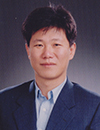
- Name : Chang Seok Lee
- E-mail : cslee@hanbat.ac.kr
- Location of lab. : N5-509
- Contact number : +82-42-821-1217
Introduction to the Lab (field of research)
MMIC Lab has researched the fields of wireless communication system application, wired communication system application, microprocessor application, sensor application, and internet application program, starting with high-frequency IC design. Using all the technologies we have studied, we are conducting research on IoT applications. In particular, the research topics are focused on people-oriented IoT scenarios such as the scenario that save energy, etc. rather than device-oriented topics such as TV control, refrigerator monitoring, and lamp control, etc.
Representative research results
Paper
- Chang-seok Lee et al, “Low power digital PLL based TDC using low rate clocks”, Electronics Letters(SCI), Vol.47, No.14, July 2011, pp.793-794
- Chang-seok Lee et al, “A 0.18-µm 3.1-4.8 GHz CMOS WIDEBAND SINGLE TO DIFFERENTIAL LNA FOR UWB SYSTEM”, MICROWAVE AND OPTICAL TECHNOLOGY LETTERS(SCI), Vol.51. No.7, July 2009, pp.1778-1781
- Chang-seok Lee et al, “DESIGN OF QUASI-CHAOTIC SIGNAL GENERATION CIRCUIT FOR UWB CHAOTIC-OOK SYSTEM”,Journal of Electromagnetic Waves and Applications(SCI), Vol.22, No.13, 2008, pp.1725-1733
Patent
- “Wireless communication system with echo-cancellers and a ring-hybrid”, Korea Patent No.10-2007-0074060, 2007
- “ULTRA WIDE BAND PULSE SIGNAL GENERATOR”, Korea Patent No.10-2007-0093770, 2007
- “Reciever to rejecting Image signal and Method to rejecting Image signal using it”, Korea Patent No.10-2007-0038649, 2007
Wisoft Laboratory
Adviser
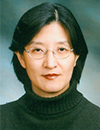
- Name : Hyun-Ju Park
- E-mail : phj@hanbat.ac.kr
- Location of lab. : N5-510
- Contact number : +82-42-821-1220
Introduction to the Lab (field of research)
Our laboratory, which started from the database laboratory in 1999, was renamed the Wireless Communication Software(WiSoft) Laboratory in 2007 for various fields and new research activities. As of last year, the laboratory has produced 29 master's and 5 PhD's. Currently, 26 researchers, including master's and doctoral students, are conducting research activities to development of academics and technologies in related fields. Our laboratory aims to study software for next generation wireless communication system. In particular, we place a lot of weight on software implementation techniques to enhance practical capabilities as well as theoretical research. There are two main themes of research that are focused on. First, the embedded team studies the Embedded S/W areas including implementation firmware on low power MCU and RTOS. We are researching IoT solutions using PAN protocols such as Zigbee and Bluetooth, and conducting control exercises through Arduino and RPi, which are open source hardware.
Second, the application team is working on design techniques that can be flexibly handled in applications that require frequent requirements changes and high scalability. In addition to researching microservice architectures for domains with complex requirements, the team is working on IoT platforms that can selectively accommodate multiple communication protocols used in the IoT environment.
Lastly, based on ongoing research, we hope to become a research group that studies technologies that will make people happy in the new era.
Representative research results
Paper
- “A Study for Improving Efficiency of IoT Environment and Solution Based on MQTT Protocol,” Journal of the Korea Institute of Information and Communication Engineering, 2019. 07.
- “Implementation of query model of CQRS pattern using weather data,”, Journal of the Korea Institute of Information and Communication Engineering, 2019. 06.
- “RESTful, Redis Based API Server Platform Design for Automatic API Generation and Data Processing Performance,”The Journal of Korean Institute of Communications and Information Sciences, 2019. 05.
- “IoT Data Collection Platform Based on Selective Protocols,” The Journal of Korean Institute of Communications and Information Sciences, 2017.04.
- “The Data Collection Solution Based on MQTT for Stable IoT Platforms,” Journal of the Korea Institute of Information and Communication Engineering, 2016. 04.
Project
- A Study on Heterogeneous Data Integration for Efficient Data Analysis in MSA Environment / National Research Foundation of Korea(2018. 06 ~ )
- A study of data collection solutions and data storage technology for development of IoT Platforms based on selective protocol / National Research Foundation of Korea (2015. 11 ~ 2018. 10)
Antenna Laboratory
Adviser
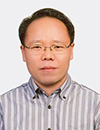
- Name : Jong Kweon Park
- E-mail : ingpark@hanbat.ac.kr
- Location of lab. : N4-307
- Contact number : +82-42-821-1222
Introduction to the Lab (field of research)
In our lab, many kinds of optimum antenna for wireless communication system were proposed, designed, and developed. Researchers of our lab have experienced the hands-on-background through the antenna design, fabrication, and measurement. The aim of our lab is the research improvement by learning the theory and practice as an antenna engineer. We have developed many kinds of antenna using the Ansoft's HFSS 3D simulator and adopting numerical analysis. Especially, we have developed and studied the UWB antenna, the multiband antenna, RFID, rectenna, motion detector, DVB-H antenna, Zigbee antenna, and MIMO antenna.
Representative research results
Paper
- Jong-Kweon Park et al, “Design of an Ultra-Compact UHF Passive RFID Tag Antenna for a Medical Sample Tube” ETRI Journal(SCI), Vol.34, No.6, December 2012, pp.974-977
- Jong-Kweon Park et al, “TRIPLE-BAND ANTENNA DESIGN USING THE MATCHING CIRCUIT FOR DVB-H/PCS/WLAN”, MICROWAVE AND OPTICAL TECHNOLOGY LETTERS(SCI), Vol.53, No.3, March 2011, pp.532-536
- Jong-Kweon Park et al, “Utility accrual real-time scheduling for (m,k)-firm deadline-constrained streams on multiprocessors”, ELECTRONICS LETTERS(SCI), Vol.47, No.5, 3rd March 2011, pp.316-317
- Jong-Kweon Park et al, “DESIGN OF UHF RADIO FREQUENCY IDENTIFICATION METAL TAG ANTENNA USING T-SHAPED SLOT”, MICROWAVE AND OPTICAL TECHNOLOGY LETTERS(SCI), Vol.53, No.10, October 2011, pp.2251-2255
Patent
- “Metal Tag Antenna”, Korea Patent No.10-1126672, 2012
- “DUAL-BAND CHIP ANTENNA”, Korea Patent No.10-1178852, 2012
- “TRIPLE-BAND ANTENNA”, Korea Patent No.10-1075583, 2011
- “TRIPLE-BAND ANTENNA”, Korea Patent No.10-1076132, 2011
Digital Communication Laboratory
Adviser
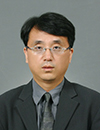
- Name : Hyeok Koo Jung
- E-mail : junghk@hanbat.ac.kr
- Location of lab. : N4-406
- Contact number : +82-42-821-1747
Introduction to the Lab (field of research)
In this Digital Communication Lab., we have researched MIMO OFDM systems, specifically synchronization algorithms in IEEE802.11n system and MB-OFDM system, the performance enhancement of baseband using diversity technology and relay-based cooperative communication algorithm.
Representative research results
Paper
- Hyeok Koo Jung, “Alternate Time-Switched Space-Time Block Coding Technique for Single Carrier Modulation”, IEICE TRANSACTIONS ON Fund. of Electronics, Commun. and Computer Science, Vol.E96-A, No.3, March 2013, pp.737-739
- Hyeok Koo Jung, “Alternate Time-Switched Space-Time Block Coding Technique for OFDM Systems”, IEICE TRANSACTIONS ON COMMUNICATIONS, Vol.E95-B, No.9, September 2012, pp.3038-3041
- Hyeok Koo Jung, “Hybrid STT/ERT and SC-FDE technique for single carrier transmission with a guard period”, IEICE ELECTRONICS EXPRESS, Vol.8, No.20, October, 2011, pp.1723-1729
Patent
- “Alternate Time-Switched Space-Time Block Coding Technique for Single Carrier Modulation”, Korea Patent No.1014692340000, 2014.
- “OFDM TRANSMISSION SYSTEM WITH SPACE-TIME BLOCK CODING TECHNOLOGY USING SWITCH”, Korea Patent No.1014462670000, 2014.
Communication Signal Processing Laboratory
Adviser
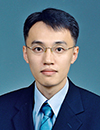
- Name : Eui-Rim Jeong
- E-mail : erjeong@hanbat.ac.kr
- Location of lab. : N5-315
- Contact number : +82-42-821-1752
Introduction to the Lab (field of research)
Communication signal processing laboratory (CSPLAB), led by Prof. Eui-rim Jeong was established in 2009 as a part of department of information and communication.
Major research areas of CSPLAB may include :
- Deep learning techniques in Communication Systems.
- Communication Signal Processing associated with synchronization, interference cancellation, and software-defined radio
- Detection and Estimation for wireless communication system
- Military communication and future mobile communication
There are several undergraduate course works related with lab activities, which are Signal and Systems, Communication Engineering, Communication systems and Digital Signal Processing. Several research projects are going on which include mobile wireless and military communications.
Representative research results
Paper
- Joung, S. Jung, S. Chung and Eui-Rim Jeong, “CNN based Tx-Rx distance estimation for UWB system localisation,” Electronics Letters, (2019).
- S. Kwon, J. Hong, E.- K. Choi, E. Lee, D. E. H, W. Kang, B. Lee, E. -R. Jeong, B. -K. Koo, S. Oh, and Y. Yi, “Deep learning approaches to detect atrial fibrillation using photoplethysmographic signals,” JMIR mHealth and uHealth, (2019).
- J. Joung, E. -R. Jeong, “Multiuser space-time line code with optimal and suboptimal power allocation methods,” IEEE Access, (2018).
- Park, Chan-Won, Eui-Rim Jeong, and Ji-Hoon Kim. “A New Digital Predistortion Technique for Analog Beamforming Systems.” IEICE Electronics Express, (2016).
- Hong, Soon-il, Kwang-Pyo Lee, and Eui-Rim Jeong. “Robust Digital Predistortion in Saturation Region of Power Amplifiers.” International Journal of Electrical and Computer Engineering (IJECE) 6.1 (2016).
- Lee, Kwang-Pyo, Soon-Il Hong, and Eui-Rim Jeong. “A Polynomial Digital Pre-Distortion Technique Based on Iterative Architecture.” International Journal of Electrical and Computer Engineering (IJECE) 6.1 (2016).
Patent
- MIMO SYSTEM, METHOD OF CONVERTING TO ANALOG SIGNAL IN MIMO TRANSMITTER AND METHOD OF CONVERTING TO DIGITAL SIGNAL IN MIMO RECEIVER, US patent, pending
- APPARATUS AND METHOD OF DIGITAL PREDISTORTERS FOR MULTI-BAND MULTI-MODE TRANSMITTERS, Korea patent, 10-1094202
- Method and Appratus for pre-compensation of self local oscillator coupling effect in transmitters, Korea patent, 10-1232815
- Apparatus and method for low cost implementation of adaptive digital predistortion algorithm using envelope detection feedback, Korea patent, Korea patent, 1020120122302
- Apparatus and method for low cost implementation of adaptive digital predistortion algorithm using envelope detection feedback, Korea patent, 1020120122302
- Apparatus and method of predistortion of multiple nonlinear amplifiers with single feedback loop, Korea patent, 1020130033502
- Micro pump for transporting fluids, an air blower, and a digital speaker, Korea patent, 1020120054246
- PRE-DISTORTION APPARATUS AND METHOD FOR SELF LOCAL OSCILLATOR COUPLING EFFECT IN TRANSMITTERS, Korea patent, 1020110028092
- SYSTEM OF ECHO CANCELLATION AND ECHO CHANNEL ESTIMATION USING THE MULTIPLE ANTENNAS, Korea patent, 10-0941491
- THE RECEVING DEVICE OF BI-DIRECTIONAL TRANSMISSION SYSTEM BASED ON AMPLIFY-AND-FORWARD RELAY AND SELF INTERFERENCE CANCELLATION METHOD, Korea patent, 10-0909356
- Digital Predistortion Apparatus for Wideband Power Amplifiers and Method Therefor, Korea patent, 1020100041263
Microwave Circuits and Modules Laboratory
Adviser

- Name : Dong-Ho Lee
- E-mail : dhlee@hanbat.ac.kr
- Location of lab. : N4--306
- Contact number : +82-42-821-1748
Introduction to the Lab (field of research)
Since 2010, we have been working on microwave circuits and modules for wireless communications, optical communications, and radar applications. We are designing integrated circuits using CMOS, GaAs, and GaN technologies and developing modules on printed circuit boards using commercial chips. Recently, we are also developing ultrasonic circuits for humidifiers and algae control applications.
Representative research results
Paper
- Jusung Kim, Han-Shin Jo, Kyoung-Jae Lee, Dong-Ho Lee, Dae-Hyun Choi, and Sangkil Kim, “A Low-Complexity I/Q Imbalance Calibration Method for Quadrature Modulator,” IEEE Transactions on Very Large Scale Integration (VLSI) Systems, vol. 27, no. 4, pp. 974-977, April 2019.
- Jinseok Park, Seungchan Lee, Dongho Lee, and Songcheol Hong, “A 28GHz 20.3%-Transmitter-Efficiency 1.5°-Phase-Error Beamforming Front-End IC with Embedded Switches and Dual-Vector Variable-Gain Phase Shifters,” in Proc. IEEE International Solid-State Circuits Conference, pp. 176-177, February 2019.
- Joon Hee Lee, Gyun Tae Kim, Jusung Kim, Ockgoo Lee, Kwang-Jin Koh, and Dong-Ho Lee, “A Linearity Improvement Technique for Two-Stage Amplifiers with Second Harmonic Driving,” International Journal of Microwave and Optical Technology, vol. 13, no. 4, pp. 310-316, July 2018.
- Hyunseok Choi, Dong-Ho Lee, and Songcheol Hong, “A Triple-Power-Mode Digital Polar CMOS RF Power Amplifier With LO Duty Cycle Control,” IEEE Microwave and Wireless Components Letters, vol. 26, no. 9, pp. 702-704, September, 2016.
- Kichul Kim, Dong-Ho Lee, and Songcheol Hong, “A Dual-Mode Multi-Band Second Harmonic Controlled SOI LDMOS Power Amplifier,” IEEE Microwave and Wireless Components Letters, vol. 25, no. 7, pp. 466-468, July, 2015.
Patent
- Dong-Ho Lee, “Tunable coupler and stripline coupler,” Korea patent 10-1811245, December 15, 2017.
- Dong-Ho Lee and Hyungtae Shin, “Object recognition device,” Korea patent 10-1735289, May 8, 2017.
- Songcheol Hong, Sangmin Lee, and Dong-Ho Lee, “Apparatus for detecting signal using isolated port of coupler,” Korea patent 10-1672797, October 31, 2016.
- Changseok Lee and Dong-Ho Lee, “Frequency variation System of Ground Penetrating Radar array for finding speed improvement,” Korea patent 10-1627346, May 30, 2016.
- Dong-Ho Lee, Songcheol Hong, Dongmin Kim, Sanghoon Sim, and Kye-Ik Jeon, “Transceiver switchless bi-directional distributed amplifying apparatus,” Korea patent 10-1567472, November 3, 2015.
CCSL Laboratory
Adviser
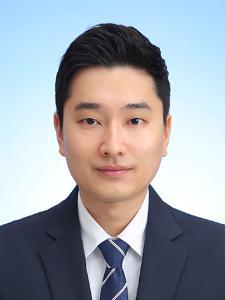
- Name : Jihwan Moon
- E-mail : anschino@staff.hanbat.ac.kr
- Location of lab. : N5-411
- Contact number : +82-42-821-1201
- Homepage : https://anschino.github.io/ccsl/
Introduction to the Lab (field of research)
Cognitive Communications Systems Laboratory (CCSL) aims to apply perceptive, adaptive and learning-based approaches to design modern wireless communications systems. First, we are interested in developing efficient algorithms to achieve ultra reliability, low latency and high throughput for wireless networks. We also delve into self-organizing networks, which are powered by cognitive operations among devices and energy harvesting technologies. Lastly, we seek for novel methods of information protection, legitimate surveillance, and covert communications. To this end, the members of CCSL have an opportunity of mastering mathematical tools such as linear algebra, linear/non-linear programming and machine learning. They can also develop their programming skills to implement or set up simulation environments of wireless systems.
Representative research results
Paper
- Jihwan Moon, “Covert Communications in a Compress-and-Forward Relay System,” ICT Express, Vol. 10, No. 2, pp. 412 - 417, Apr. 2024.
- Jihwan Moon, “Performance Comparison of Relay-Based Covert Communications: DF, CF and AF,” Sensors, Vol. 23, No. 21, p. 8747, Oct. 2023.
- Jihwan Moon, “Disguised Full-Duplex Covert Communications,” Sensors, Vol. 23, No. 14, p. 6515, Jul. 2023.
- Zhilin Fu, Sangwon Hwang, Jihwan Moon, Haibao Ren, and Inkyu Lee, “A Codebook Design for FD-MIMO Systems with Multi-Panel Array,” IEEE Transactions on Vehicular Technology, Vol. 71, No. 12, pp. 13366 - 13371, Dec. 2022.
- Seunghwan Baek, Jihwan Moon, Junhee Park, Changick Song, and Inkyu Lee, “Real-time Machine Learning Methods for Two-way End-to-End Wireless Communication Systems,” IEEE Internet of Things Journal, Vol. 9, No. 22, pp. 22983 - 22992, 15 Nov. 2022.
Patent
- Inkyu Lee, Zhilin Fu, Jihwan Moon, and Sangwon Hwang, “METHOD AND APPARATUS FOR TRANSMISSION AND RECEPTION BASED ON LINE PANEL CODEBOOK IN WIRELESS COMMUNICATION SYSTEM,” Patent date: Filed May 24, 2022 (pending), Jan. 09, 2024 (registered) Patent issuer and number: US 17/752,095 (pending), US 11,870,518 (registered)
- Inkyu Lee and Jihwan Moon, “SYSTEM AND METHOD FOR MONITORING WIRELESS COMMUNICATION CHANNEL USING COOPERATIVE JAMMING AND SPOOFING,” Patent date: Filed May 21, 2019 (pending), Apr. 30, 2021 (pending), Aug. 08, 2023 (registered) Patent issuer and number: PCT/KR2019/006046 (pending), US 17/290,374 (pending), US 11,722,239 (registered)
- Chanhong Kim, Inkyu Lee, Hoon Lee, Jihwan Moon, Tae Seok Oh, and Seok Ju Jang, “APPARATUS AND METHOD FOR PERMUTATION OF BLOCK CODE IN WIRELESS COMMUNICATION SYSTEM,” Patent date: Filed Jun. 29, 2017 (pending), Aug. 28, 2018 (registered) Patent issuer and number: US 15/638,065 (pending), US 10,063,260 (registered)
- Inkyu Lee, Zhilin Fu, Jihwan Moon, and Sangwon Hwang, METHOD AND APPARATUS FOR TRANSMISSION AND RECEPTION BASED ON LINE PANEL CODEBOOK IN WIRELESS COMMUNICATION SYSTEM, Patent date: Filed Jan. 03, 2022 (pending), Jan. 03, 2024 (registered) Patent issuer and number: KR 10-2022-0000250 (pending), KR 10-2622249 (registered)
- Jihwan Moon and Inkyu Lee, SYSTEM AND METHOD FOR MONITORING WIRELESS COMMUNICATION CHANNEL USING COOPERATIVE JAMMING AND SPOOFING, Patent date: Filed Nov. 2, 2018 (pending), Aug. 21, 2020 (registered) Patent issuer and number: KR 10-2018-0133536 (pending), KR 10-2148688 (registered)
- Inkyu Lee and Jihwan Moon, METHOD FOR ALLOCATING TIME IN WIRELESS POWERED COMMUNICATION NETWORKS, Patent filed date: Filed Nov. 23, 2017 (pending), Jul. 11, 2019 (registered) Patent issuer and number: KR 10-2017-0157179 (pending), KR 10-2001316 (registered)